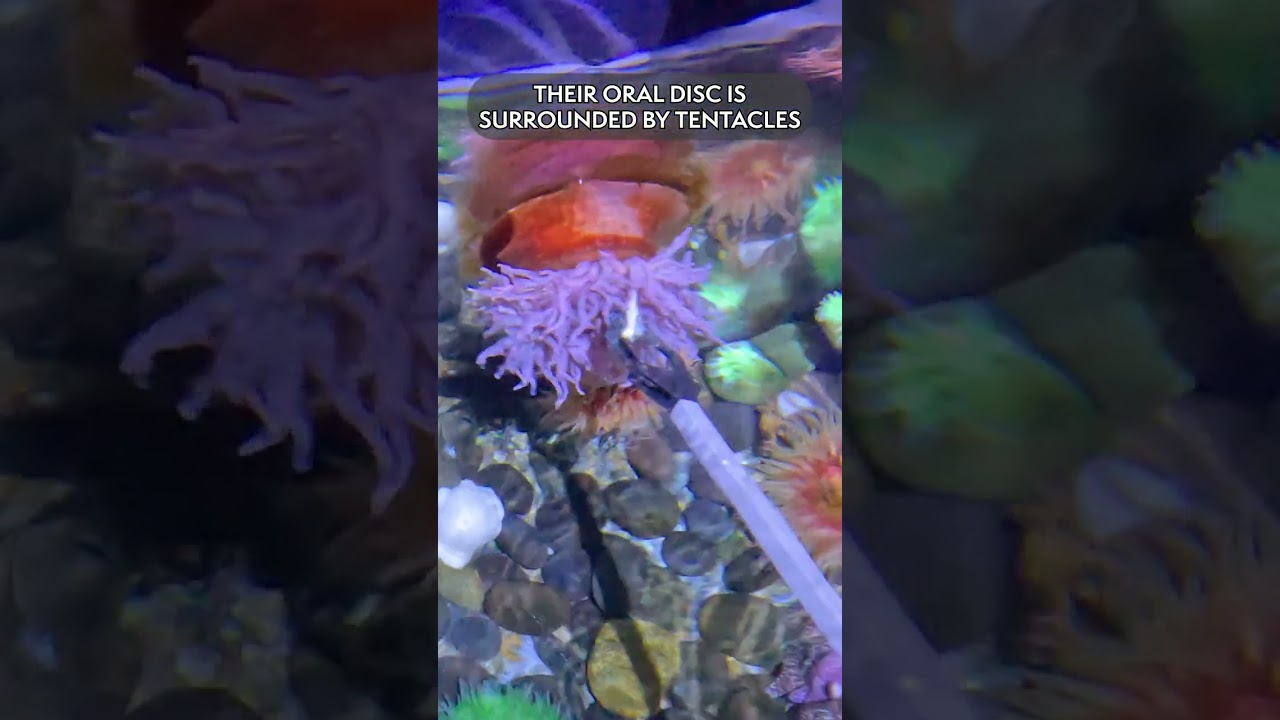– Sea anemones are fascinating marine invertebrates that resemble flowers but are related to corals and jellyfish.
– Despite their stationary appearance, sea anemones are predators that use their tentacles to capture unsuspecting prey.
Symbiotic relationships define much of the ocean’s life; sea anemones and clownfish are classic examples of mutualism.
– The vibrant colors of anemones come from a combination of pigments and symbiotic algae, highlighting their adaptive beauty.
– Understanding sea anemones provides insights into marine biodiversity and the intricate ecosystems beneath the waves.
As you descend beneath the surface of our planet’s vast oceans, you encounter a world in perpetual serenity and vibrant chaos. Draped across this seascape, as though a painter fancied splattering flecks of neon onto the canvas of the ocean floor, are the enigmatic sea anemones. The spectacle of these creatures prompts a genuine sense of wonder; it incites a chorus of ‘What the Heck?!’ exclamations even among seasoned enthusiasts. But what even is a sea anemone?
These seemingly serene beings, with their petal-like appendages and spectrum of colors rivaling the most ostentatious floral arrangements, might be easily mistaken for plants. But alas, they are not. Sea anemones belong to a group of marine marvels classified as Cnidaria—a species that includes pulsating jellyfish and architecturally masterful coral reefs.
Let’s delve into the endlessly intriguing existence of these tentacled treasures and explore why they are anything but a garden-variety fixture of the underwater realms.
**A Predator in Disguise**
First and foremost, do not let their passive demeanor and rooted stance mislead you. Anemones are far from the horticultural ornamentation they mimic; they are predators. These creatures are adept hunters equipped with a crown of tentacles laced with stinging cells known as nematocysts. The anemone strikes with lethal efficiency when a naive fish or unsuspecting crustacean brushes against these seemingly innocuous tendrils. They inject their prey with a paralyzing neurotoxin, then guide their immobilized banquet into their central mouth. It’s a fatal attraction in a literal sense.
**Of Clownfish and Anemones: An Underwater Bond**
The poignant and fortuitous alliance between the clownfish and sea anemones illustrates the ocean’s capacity for fostering intricate symbiotic relationships. Here, we find mutualism at its finest—the clownfish finds sanctuary among the anemone’s venomous vines, shielded from predators. At the same time, it, in return, grants its host protection from parasites and sweeps currents to ensure nutrient-rich waters pass by. This bond is more than a mere acquaintance; it is a life-sustaining pact where both parties flourish.
**A Palette of Living Colors**
The riotous coloration adorning sea anemones can be attributed to various sources, from pigments inherent in their skin to the resident algae housed within. It’s a partnership of practicality and aesthetics, where the algae perform photosynthesis and share their sugars with the anemone, which in return receives nourishment simply by basking in the filtered sunbeams piercing the water’s surface. This dual-life form is a testament to the resourcefulness and adaptability of life itself.
**An Insight into a Hidden World**
Peering into the depths and truly recognizing the grandeur of sea anemones is akin to gleaning a fragment of understanding of our planet’s immense biodiversity. Each anemone plays a role in the grand design of things, a living puzzle piece in the ecological fabric. The importance of such creatures extends beyond their beauty and into the realm of ecological significance. They serve as bioindicators—canaries in the coal mine of our seas, signifying the health of our marine environments.
**The Anemone’s Journey Through Time**
Remarkably, sea anemones have graced our oceans for time immemorial, with ancient anemones leaving traces of their existence as far back as 600 million years ago. Their longevity as a species speaks volumes about their successful adaptation to many sea conditions and their resilience in shifting ecosystems. The ancient ocean was once their exclusive domain, and it remains so to this day—a tale of survival paralleled by only a few.
**Navigating the Anemone’s Habitat**
The ubiquity of sea anemones is a testament to their adaptability. Whether nestled in the coral reefs, grasping the rocky crevices of submerged landscapes, or even bobbing along icy flows in polar realms—they are as much a product of their environment as they are creators of micro-habitats. Without roots, these creatures anchor themselves with an adhesive foot called a basal disc, latching onto surfaces with an enviable tenacity that ensures a front-row seat to the passing buffet.
**Anemones and the Art of Regeneration**
What is truly remarkable about these fascinating entities is their ability to regenerate, heal, and reconstitute themselves from fragments. Some have even perfected the art of asexual reproduction, cloning themselves and colonizing areas with their kind. The sea anemone’s cellular craftsmanship is a marvel, a testament to the relentless perseverance inherent in life, and a vivid demonstration of what can be accomplished with self-innovation.
**A Curious Case of Identity**
Constantly defying clear categorization, some sea anemones have perplexed researchers by adopting characteristics typically ascribed to different species. Through a wealth of shapes, sizes, and behavioral quirks, anemones challenge the very notion of a rigid taxonomy, straddling lines between solitary and colonial living, acting both as individual entities and as an interconnected community.
**Anemones: The Harbingers of Change**
Encroachment, pollution, and climate-altered seascapes have not gone unnoticed by these aquatic sentinels. Sea anemones, much like their coral cousins, provide us with indicators of oceanic well-being or distress. Their sensitivity to temperature, acidity, and water quality changes means that their state often reflects the broader status of our marine ecosystems. Researchers rely on these exacting anemones as they sound a silent alarm on the health of our seas—a call to action that cannot be ignored.
*****
Source Description
With their delicate, petal-like tentacles, bright colors and immobile lifestyle, it’s easy to confuse sea anemones for underwater flowers. However, these invertebrates are closely related to corals and jellyfish!
#animals #biology #marinebiology #invertebrates #anemones #seaanemones #coral #jellyfish #clownfish #ocean #dyk #til #wth #didyouknow #todayilearned #whattheheck


